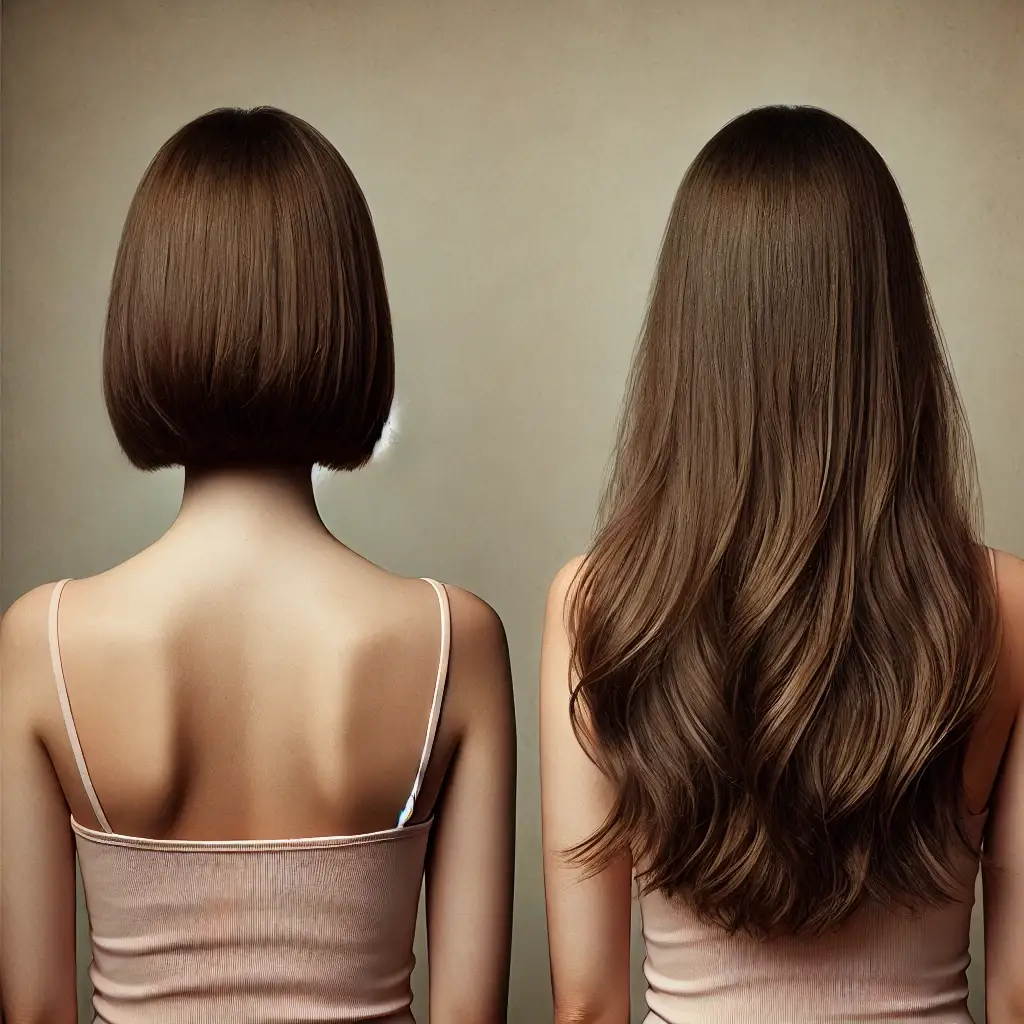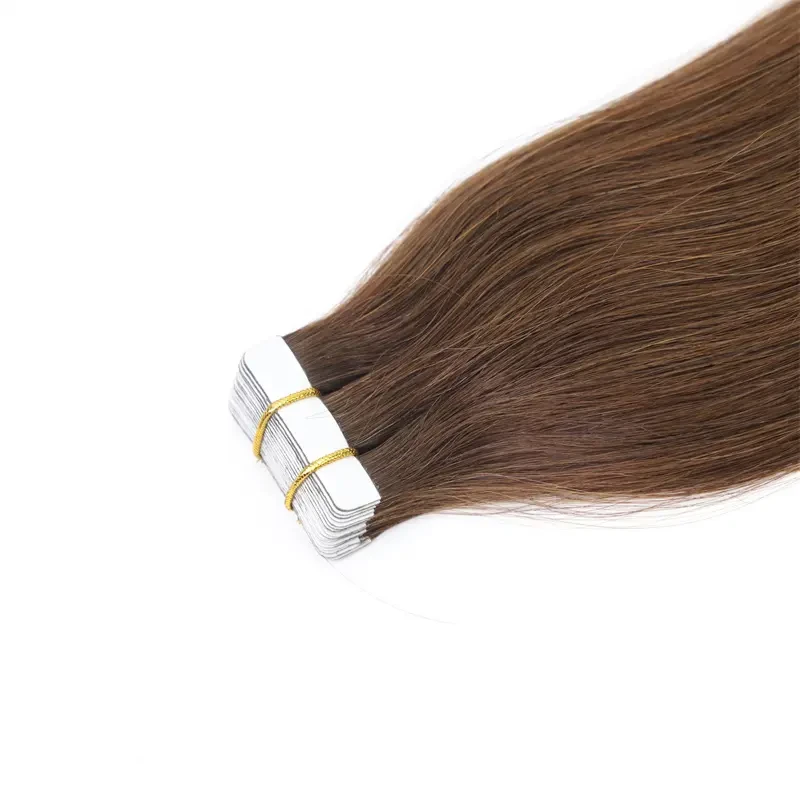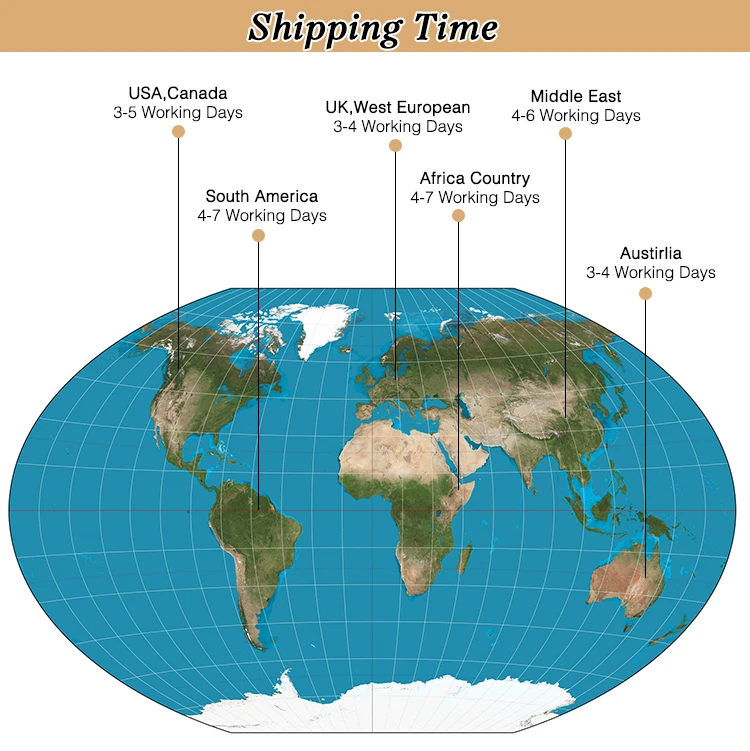Tape-in hair extensions consist of thin wefts of real or synthetic hair that are applied to a person’s natural hair using medical-grade adhesive. The extensions lie flat against the scalp, making them one of the most discreet and comfortable types of hair extensions available. Each weft is around 1 to 2 inches wide, and the method allows for a natural look with the hair growing seamlessly from the scalp.
How Tape-Ins Differ from Other Extensions Tape-in extensions are a semi-permanent solution that differs from clip-ins, fusion, and sew-ins. Clip-in extensions, for example, are removable daily, while tape-ins are designed to stay in the hair for 6 to 8 weeks at a time. Fusion extensions require heat to bond the hair, which can cause damage over time, whereas tape-ins do not involve heat application.
Thin or Short Hair One of the most common reasons people seek hair extensions is to address thin or short hair. Studies show that by age 30, around 40% of women will experience some degree of hair thinning, while 50% of men will experience significant hair loss by age 50. Whether due to genetics, medical conditions, or environmental factors, hair thinning can significantly impact self-esteem and confidence.
Difficulty Growing Hair Some individuals have difficulty growing their hair past a certain length due to breakage or slow hair growth. The average person’s hair grows approximately 6 inches per year, but many struggle with achieving long, healthy hair due to factors like heat damage, chemical treatments, and inadequate hair care.
Limited Styling Options People with thin or short hair often face limitations in styling. Hairstyles that require volume or length, such as beach waves or elaborate updos, can be difficult to achieve without extensions. For many, this limits their ability to experiment with new styles or achieve certain looks for special occasions.

The Installation Process Installing tape-in extensions is a relatively quick process, taking anywhere from 1 to 2 hours, depending on the number of wefts applied. The stylist starts by sectioning the hair and applying small wefts of tape-in hair to the natural hair. Each weft “sandwiches” a thin section of the natural hair between two adhesive strips. Most people require between 40 and 60 wefts for a full-head application.
The Science Behind the Adhesive The adhesive used in tape-in extensions is medical-grade and hypoallergenic, designed to bond the extension wefts securely to the hair. The adhesive is strong enough to last through regular washing, styling, and daily activities, yet it can be safely removed with the proper solution without damaging the natural hair.
Time Commitment Compared to Other Methods Tape-in extensions are known for being quicker to install than other semi-permanent extension methods, such as fusion, which can take 3 to 6 hours. Additionally, tape-ins do not require heat or complex tools, which helps to minimize hair damage during the application process.
Volume and Length Transformation One of the most striking benefits of tape-in extensions is the immediate increase in volume and length. Clients typically add anywhere from 100 to 150 grams of hair during a full-head installation. This can significantly change the appearance of natural hair, especially for those who previously had thin or short hair.
Length Options for Extensions Tape-in extensions are available in various lengths, typically ranging from 14 inches to 24 inches. A study in 2020 revealed that the most popular lengths are 18 and 20 inches, with around 65% of customers choosing extensions within this range. For clients who want dramatic length without compromising manageability, 18-20 inches offers a balance between length and convenience.
Before: Fine or Damaged Hair Many clients who opt for tape-ins have hair that has been damaged from heat styling, chemical treatments, or improper hair care. Research has shown that 1 in 3 women experience some degree of hair breakage from regular heat styling, making extensions a useful option for those looking to give their natural hair a break from daily heat tools.
After: Protection for Natural Hair Tape-in extensions serve as a protective style for natural hair, reducing the need for excessive heat styling. Clients with tape-ins often report a 30% reduction in the use of heat tools like curling irons and straighteners, which in turn helps to preserve the health of their natural hair.
Before: Time Spent on Haircare On average, women spend about 30 minutes per day on their hair, especially if they have short or thin hair and use products or tools to create volume. This amounts to over 180 hours a year dedicated to hairstyling. Without extensions, many find it challenging to achieve their desired look due to limitations in their natural hair’s length or thickness.
After: Simplified Hair Routine After getting tape-in extensions, many clients report spending less time styling their hair. Since the extensions add volume and length, they often wake up with hair that already looks styled, reducing the need for products and tools. Some clients even cut their hairstyling time in half, to just 10-15 minutes per day.

How Long Do Tape-In Extensions Last? One of the advantages of tape-in extensions is their longevity. While the extensions need to be repositioned every 6 to 8 weeks as the natural hair grows, the extensions themselves can be reused up to three times, meaning a set of tape-ins can last for up to 6 months with proper care.
Before: Concerns About Damage Clients often express concern about potential damage to their natural hair from extensions. However, when tape-ins are installed and removed correctly by a professional, the risk of damage is minimal. Less than 5% of users report experiencing hair damage when following proper maintenance and care routines.
After: Maintaining Healthy Hair with Tape-Ins To ensure that both the extensions and the natural hair remain in good condition, it’s essential to follow a proper care routine. This includes using sulfate-free shampoos and conditioners, brushing gently to avoid tugging on the wefts, and avoiding oil-based products near the roots to prevent loosening the adhesive.
Salon Maintenance Visits Every 6 to 8 weeks, clients need to return to the salon to have their extensions moved up as the natural hair grows. These sessions typically take less time than the initial installation and are essential to maintaining the seamless look of the extensions.

Before: Limited Styling Options People with short or fine hair often face limitations in terms of styling. For example, achieving big, voluminous curls or intricate updos can be difficult without the length or thickness that extensions provide.
After: Styling Flexibility With tape-in extensions, clients can enjoy a wide range of styling options. Whether it’s wearing their hair in loose waves, a sleek ponytail, or a complex braided updo, the added length and volume allow for more styling versatility. Many clients find they can achieve styles that were previously out of reach with their natural hair alone.
Heat Styling and Tape-Ins Tape-in extensions can be styled with heat tools, such as curling irons and straighteners, just like natural hair. However, it’s important to use heat protection sprays to prevent damage to both the extensions and natural hair. Studies show that using heat protection can reduce heat damage by up to 50%, which is crucial for maintaining the longevity of the extensions.
Color and Highlight Flexibility Another advantage of tape-in extensions is the ability to experiment with hair color without committing to dyeing natural hair. Many clients opt for highlighted or balayage extensions to achieve the look of dimensional color without subjecting their hair to the potential damage of bleach and dye.

Initial Installation Costs The cost of tape-in extensions can vary depending on factors like the length and quality of the hair used. On average, a full-head installation of tape-ins costs between $200 and $600. Higher-quality hair, such as Remy hair (which has the cuticles aligned in the same direction), tends to cost more but also lasts longer.
Maintenance Costs In addition to the initial installation cost, clients should expect to pay for maintenance sessions every 6 to 8 weeks. These sessions, which involve repositioning the extensions, generally cost between $100 and $300, depending on the salon and stylist.
Cost vs. Other Hair Extension Methods While tape-ins may seem expensive initially, they are often more cost-effective in the long run compared to other methods like fusion

EMEDA is a professional tape-in hair extension manufacturer, specializing in high-quality products made from 100% human hair. With years of experience in the industry, we offer a wide range of customizable options to meet your needs, including various lengths, colors, and textures. Our tape-in extensions are known for their durability, natural appearance, and ease of application. For competitive pricing and inquiries, feel free to contact us directly. We look forward to providing you with the best hair extension solutions.
Contact: Anna
WhatsApp/Tel: +8618562611507
Email: sales08@emedahair.com

New customization and stock clearance
WhatsApp us